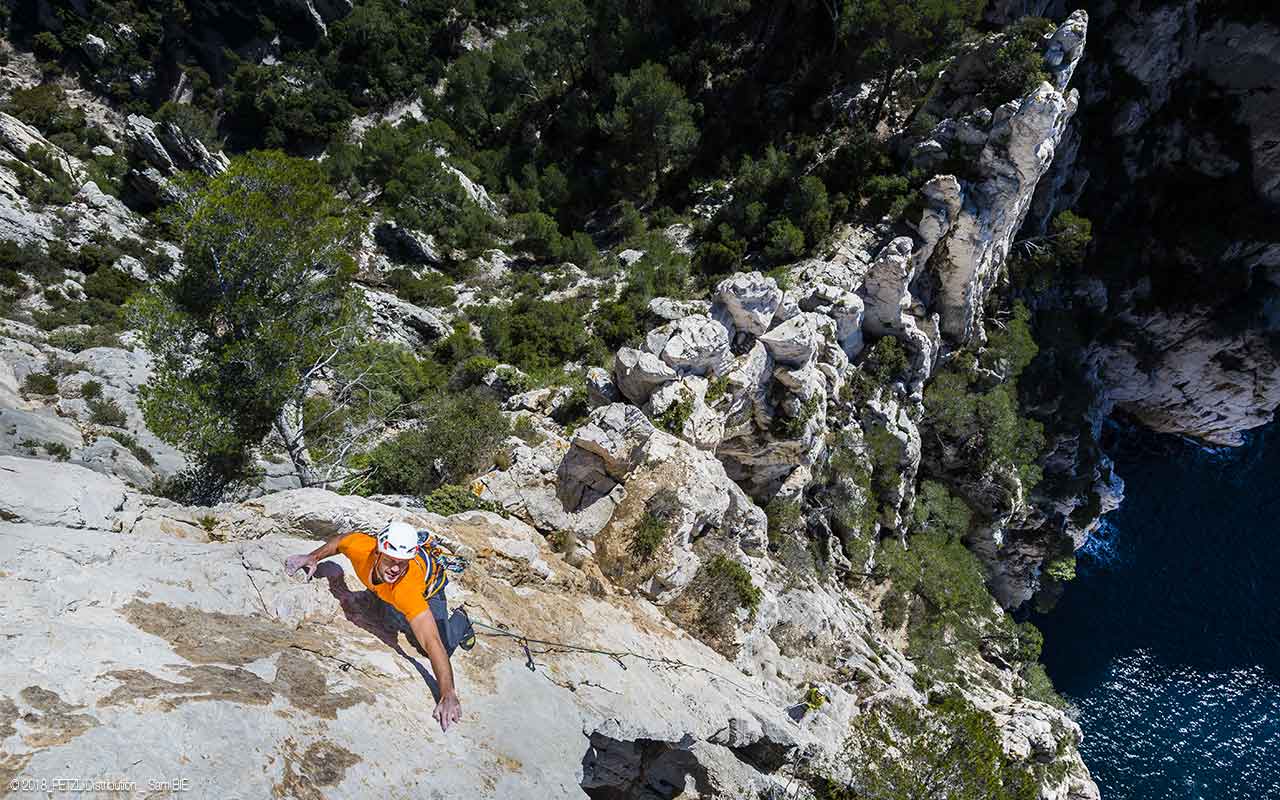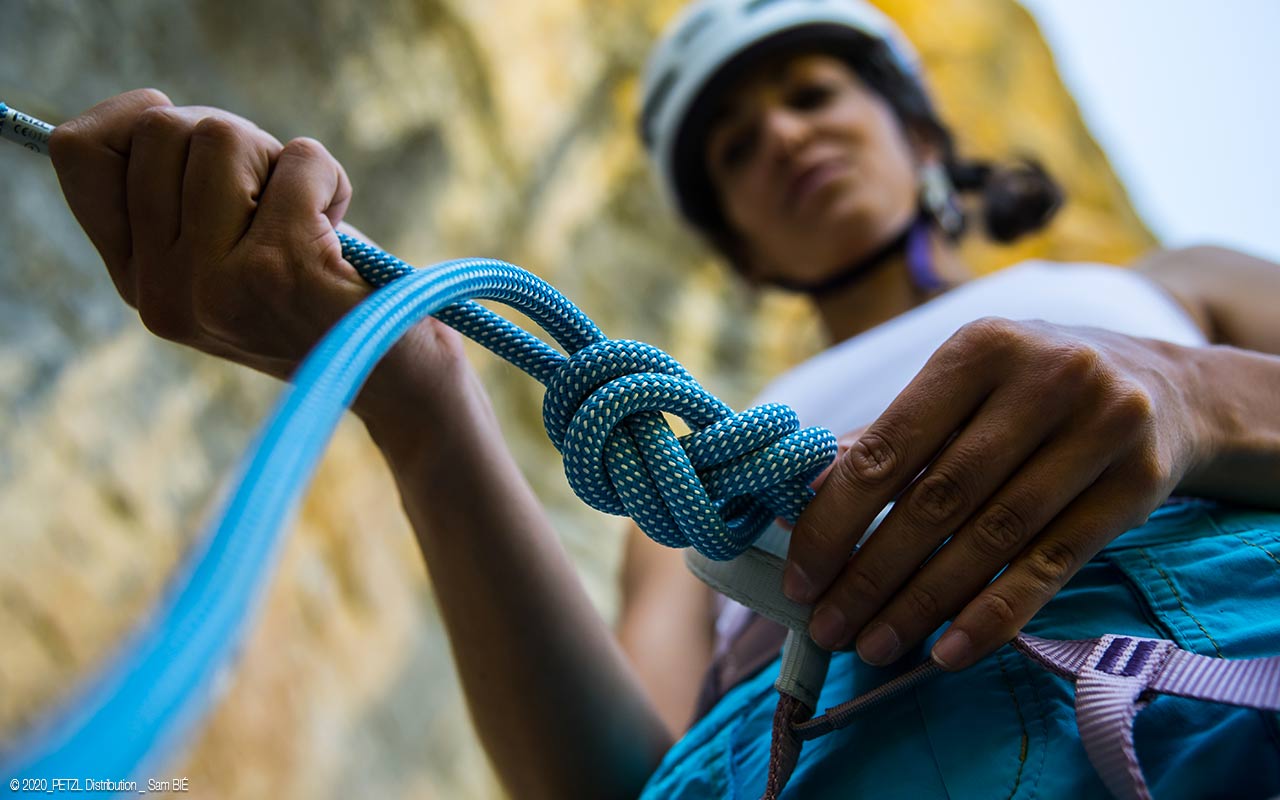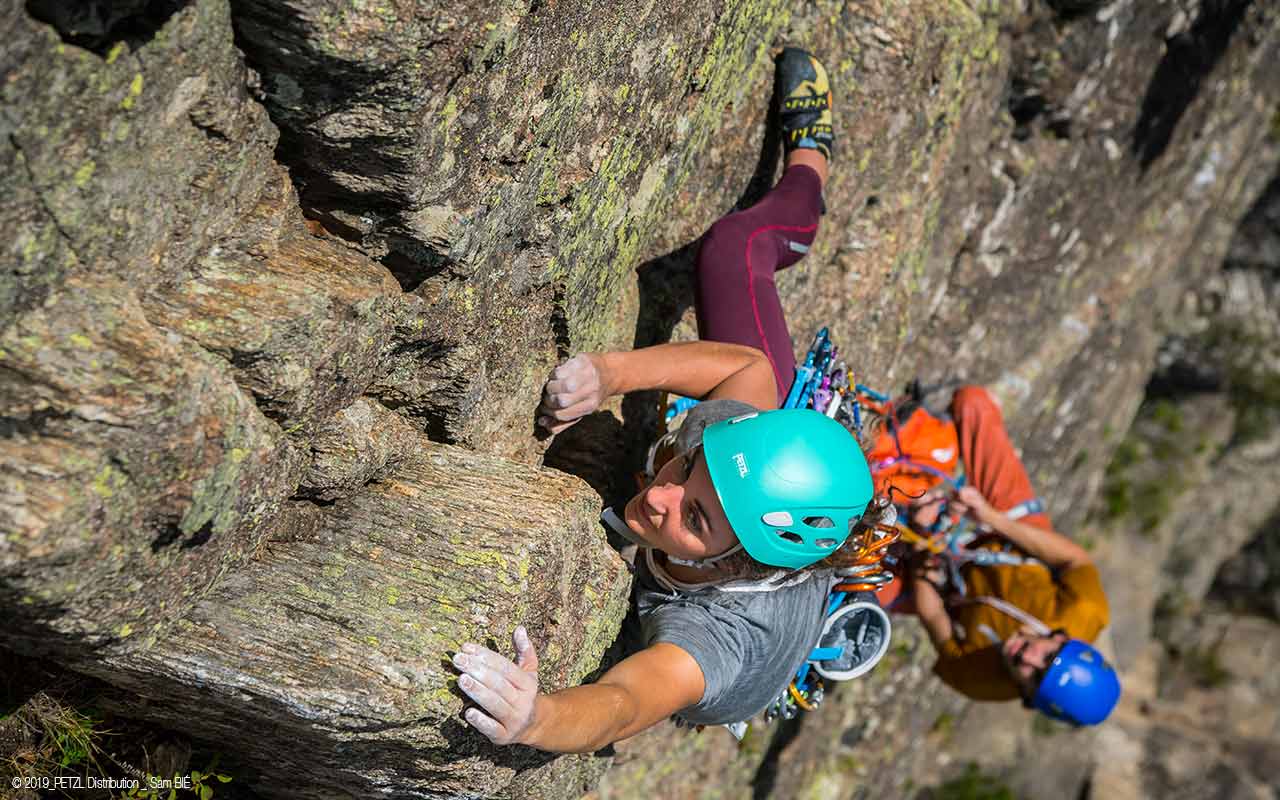Climbing Trip: Single & Multi-pitch Climbing with a Single Rope
When we pack for a trip, whether we're traveling by plane, car, or bike, the idea is always the same: keep it as light as possible. When it comes to climbing trips, it's easy to find yourself piling up lots of gear — single rope, half ropes, GRIGRI, REVERSO, and other gear you might need if you're planning on tackling both single and multi-pitch climbs. To go light and fast, you can choose to bring just a single rope and leave the half ropes at home. Check out our technical tips to learn more about multi-pitch climbing with a single rope.
June 21 2021
Multi-Pitch Climbing
 David Denis on the third pitch (6c) of “Le Chemin du Roucas Blanc” in the sector, l'Oule et Le Trou du Serpent in Calanques, France
David Denis on the third pitch (6c) of “Le Chemin du Roucas Blanc” in the sector, l'Oule et Le Trou du Serpent in Calanques, France
Before Climbing, Ask the Right Questions
Multi-pitch climbing on a single rope requires specific techniques when it comes to rappelling or bailing off the route. Additionally, in a situation where there is a higher risk of damaging the rope (when moving over rough/jagged terrain or falling on an arete) a single rope doesn't offer the same level of security that half ropes do.
That's why it's important to be as informed as possible about the route you're planning to do and ask the right questions:
• Can we descend on foot or will we need to rappel?
• How will we bail off the route in case we need to?
• If we need to rappel the route, how many meters long is each pitch?
 Zabou Bonetto climbing on a single rope
Zabou Bonetto climbing on a single rope
All these points should be taken into consideration so you can choose the right gear based on the route you're planning to do. Multi-pitch climbing with a single rope shouldn't be done on a whim or improvised, and you should be proficient in the specific skills needed before you go.
 Anna Avery and Jules Buteau climbing pitch 4 (5a) of “Fissure Freyssinet”, in Geoges Vergues, Gorges d'Héric, Caroux, France
Anna Avery and Jules Buteau climbing pitch 4 (5a) of “Fissure Freyssinet”, in Geoges Vergues, Gorges d'Héric, Caroux, France
Belaying With a Single Rope
Once you're arrived at the foot of the route, it's time to climb!
Using a single rope is more convenient and straightforward for the climber. For the belayer, using a GRIGRI is also more comfortable if the leader needs to work certain moves on the climb. However, certain precautions should be taken, notably when giving a dynamic belay when the leader falls.
To learn more, reference the tech tip:
Rappelling on a Single Rope
Once you've arrived at the top of a route, knowing how you're going to get back down is the next important step.
Depending on the rappel lengths, descending a few pitches can be done with just the single rope, or with blocked rappels using a single rope and retrieval cord. Descending on foot is often preferable if you have the choice.
To learn more about rappel techniques on a single rope, reference the tech tip:
Related News







